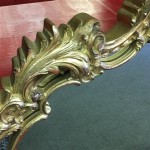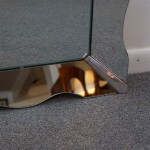How to Check Two-Sided Mirrors
Two-sided mirrors, also sometimes referred to as one-way mirrors, present unique challenges for detection. Their deceptive nature allows observation from one side while appearing reflective on the other, raising privacy concerns. Verifying the presence of a two-sided mirror is crucial for ensuring personal safety and security. Several simple yet effective methods exist for identifying these mirrors.
Visual Inspection Techniques
Several visual cues can indicate the presence of a two-sided mirror. These methods rely on observing differences in light reflection and transmission properties compared to standard mirrors.
- The Lighting Difference Test: This method involves comparing the brightness of the room in which the suspected mirror is located with the perceived reflection. If the reflected room appears significantly dimmer than the actual environment, it suggests the mirror might be two-sided. This dimming occurs due to some light passing through the mirror to the observation side.
- The Fingernail Test: This is a commonly cited but less reliable method. Placing a fingernail directly against the mirror surface can reveal a small gap between the reflection and the actual fingernail in a standard mirror. However, with high-quality two-sided mirrors or thicker glass, this gap might be imperceptible, making it an inconclusive test.
- Observing the Surrounding Environment: Look for any unusual features around the mirror. Signs of concealed observation areas, such as small gaps or inconsistencies in the wall, ceiling, or adjacent rooms, can be indicative of a two-sided mirror setup.
Advanced Verification Methods
Beyond simple visual inspections, more conclusive methods can be employed for confirming the presence of a two-sided mirror.
- The Flashlight Test: Shining a bright flashlight directly at the mirror surface while darkening the surrounding area can be effective. If the mirror is two-sided, some light will pass through, potentially illuminating the observation area behind it. Observe carefully for any signs of light leakage or the outline of a hidden room.
- The Sound Test: Tapping or knocking on the mirror surface can offer clues. A standard mirror, typically mounted against a wall, will produce a dull thud. A two-sided mirror, potentially concealing a hollow space, might produce a slightly hollower or more resonant sound.
Considerations for Accurate Assessment
Several factors can influence the effectiveness of these testing methods. Understanding these factors is crucial for accurate assessment.
- Lighting Conditions: The ambient lighting in both the observed and observation rooms significantly affects the lighting difference test and flashlight test. Conducting these tests in various lighting conditions can improve reliability.
- Mirror Quality and Construction: The quality and thickness of the glass and the reflective coating used in the mirror construction influence the results of the fingernail test and other visual inspections.
- Background Noise: Ambient noise levels can affect the accuracy of the sound test. Minimize background noise for a more reliable assessment.
Professional Inspection
For absolute certainty, particularly in sensitive situations, seeking professional assistance is recommended.
- Security Professionals: Security experts possess the knowledge, tools, and experience to definitively identify two-sided mirrors. They can employ specialized equipment and techniques to detect even the most sophisticated installations.
- Law Enforcement: In situations involving suspected illegal surveillance, contacting law enforcement is crucial. They can conduct thorough investigations and take appropriate legal action.
Understanding the Limitations
While the methods described above provide helpful tools for identifying potential two-sided mirrors, it's important to acknowledge their limitations.
- False Positives and Negatives: Some conditions can lead to inaccurate results. For instance, tinted glass or mirrors with specialized coatings might produce results similar to two-sided mirrors. Conversely, high-quality two-sided mirrors can be difficult to detect even with careful inspection.
- The Importance of Context: The location and context of the mirror are important considerations. A two-sided mirror in a retail setting, for example, likely serves legitimate security purposes, while one in a private space raises greater privacy concerns.
- Evolving Technology: Mirror technology continues to advance, potentially making some detection methods less reliable. Staying informed about the latest advancements in mirror technology is advisable.
Protecting Your Privacy
Taking proactive steps to protect your privacy in potentially sensitive environments is always prudent.
- Awareness of Surroundings: Pay attention to your surroundings, particularly in unfamiliar environments like changing rooms, restrooms, and hotel rooms.
- Reporting Suspicious Activity: If you encounter a situation where you suspect illegal surveillance, report it to the appropriate authorities immediately.
- Trusting Your Instincts: If something feels amiss, trust your intuition and take necessary precautions.

How To Tell If A Mirror Is Two Way Or Not 8 Steps With Pictures

How To Tell If A Mirror Is Two Way Or Not 8 Steps With Pictures

How To Tell If A Mirror Is Two Way Or Not 8 Steps With Pictures

How To Tell If A Mirror Is Two Way Or Not Quora

How To Tell If A Mirror Is Two Way Or Not 8 Steps With Pictures Hotel Mirrors Double Sided

Tips For Identifying Whether Your Mirror Is Two Way Or Not Ledmyplace

Always Check Hotel Mirrors Social Media S Latest Scare

How To Tell If A Mirror Is Two Way Or Not 8 Steps With Pictures

How To Check For Two Way Mirrors And Surveillance Idea Digezt Mirror Life S

Touch Your Mirror To Know If Someone S Watching You








